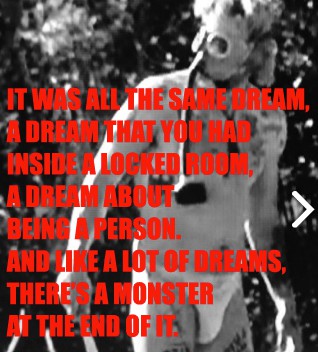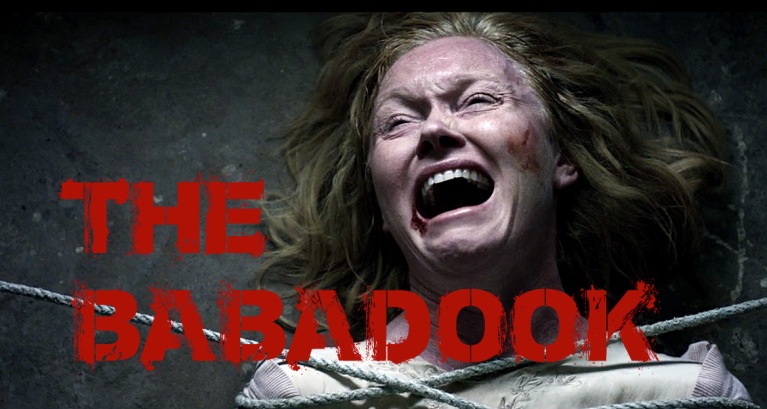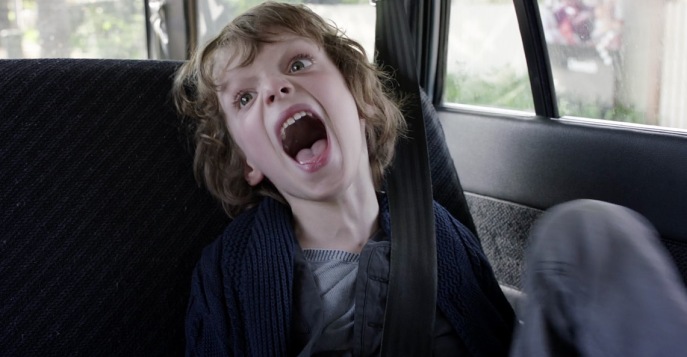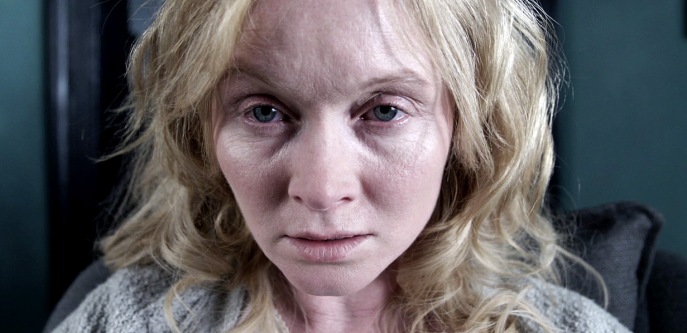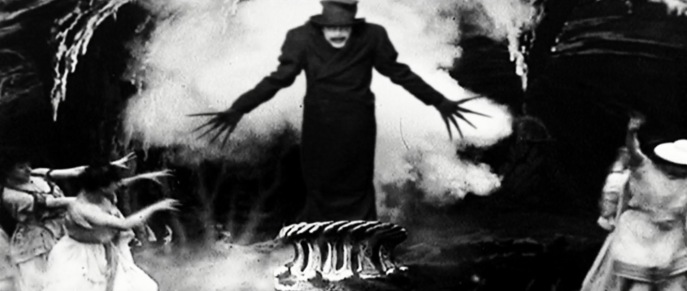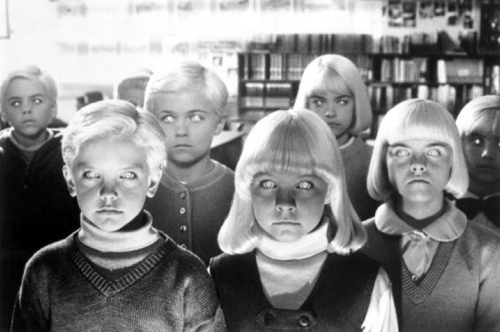Every couple of years, there’s that indie-horror darling that gets critics horny to affix their names to movie posters via hyperbolic soundbites. Thus was the case with The Babadook, Australian director Jennifer Kent’s debut about a mom and son who are haunted by a scissor-handed, pop-up book character come to life.
OK, to be fair, the most hyperbolic of these critics wasn’t actually a critic. It was William Friedkin, director of The Exorcist, who tweeted, “I’ve never seen a more terrifying film than THE BABADOOK.” That’s rather lofty praise from the guy who made what everyone and their mother seem to agree is the greatest horror flick of all time. (NOTE: I disagree with you and your mothers.)
Still, this seemed to unleash an avalanche of critical praise that built the flick up to near-Blair Witch levels of hype. So when I went to go see it in theaters last year, I knew a letdown was inevitable.
But wait.
The Babadook is actually a damn good horror movie. Let me illustrate this to you with my own superlatives. … It’s the best horror movie of 2014 (not a great year for the genre, but still); it’s one of the most emotionally compelling horror films of the past decade; and it features one of the best female lead roles in the history of the genre.
Enough quotables for you? Let’s talk about the movie…
The Babadook
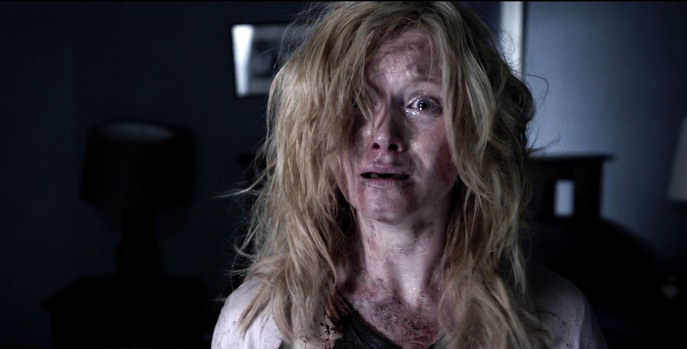
Amelia (Essie Davis) lives with her son Samuel (Noah Wiseman) in a creaky, barren two-flat in Nowhere, Australia. She’s a lonesome, sex-deprived widow whose husband died six years ago when he was transporting her to the delivery room.
Samuel—the reward of that tragic night—is an amateur magician who shoots other kids with darts, is prone to fits of rage, believes in the bogeyman and regularly screams like a dying hyena. In short, he’s the type of problem child that makes one feel sympathetic toward the Chinese government’s stance on population control.
Samuel is also the first of several shopworn genre motifs that Babadook introduces. He’s the prescient, mommy-coddled oddball plagued by demons (see: The Sixth Sense, Insidious,The Ring, etc.). I truly look forward to the day when the creepy-kid formula is thrown out the window of horror filmmaking. In the meantime—and to Wiseman’s credit—Samuel is more of a believably tortured soul than he is Child of the Corn. (It’s actually a very strong child-acting performance; I personally have just had enough children in my goddam horror movies.)
Anyway, one day Samuel stumbles on an ominous red book called “Mr. Babadook.” Amelia hesitantly reads it to him—until she realizes it’s basically an Edward Gorey bedtime story from the depths of hell. And thus an unspeakable evil is released.
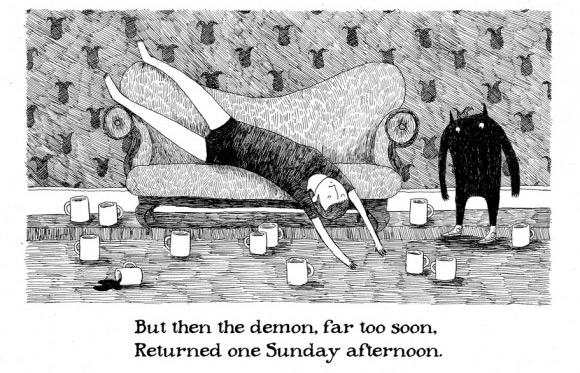
While all this may sound incredibly sinister, it should be noted that The Babadook is not the standard jump-out-your-seat horror thriller. It’s more slow-building, high-tension psychological horror with strong emotional overtones tied to the concept of grief. What makes this formula work so incredibly is, first and foremost, the transformative work of Essie Davis.
Her beautiful-but-disheveled Amelia wears an exhaustive home life on her face, and the weight of her hellish, grief-stricken burden is beyond just palpable. Davis’ acting is the kind of stuff Oscars are made for. Unfortunately, The Babadook is an indie horror movie, and therefore unpalatable to the mild-mannered octogenarian elite who bestow such honors. (I’d venture that the late Johnny Cochrane would find it humanly fucking impossible to make a compelling argument that Rosamund Pike’s performance in Gone Girl is on par with what Davis did here.)
It should also be mentioned that this flick is the best tale of grief in horror since The Descent (a personal horror top-five). I can’t really go into the uncanny similarities between the two films without giving much away, but I think you’ll get the gist.
Another strong point of Babadook is that despite its tendency to rely on horror tropes, the narrative and emotional undercurrent of the film are anything but formulaic or stilted. The film is about the roots of a troubled child’s dark imagination as much as it is about a mother coming to terms with hell on Earth. Narrative analogies in the form of old cartoon and movie clips played in Amelia’s home bring both wit and ominous artistic flair to the mother and son’s predicament. (In particular, digging into the annals of Georges Jean Méliès’ work to provide imagery for the titular character is a stroke of cinematic brilliance.)
All said, while The Babadook is by no means one of “the most terrifying films of all time,” it is a beautifully imaginative horror flick, and one that relies more heavily on acting and psychological drama than the CGI, torture porn and “jump” factors that seem to dominate much of the genre’s modern-day output.
Sure, it’s slow and has its fair share of contrivances. But while you might want more monster out of something that masquerades as a monster movie, you couldn’t ask for more out of Essie Davis, and you’d be hard-pressed to find a better allegory for the pitfalls of grief in any genre.
GRADE: B+
IMDb: 6.9
-Sam Adams
